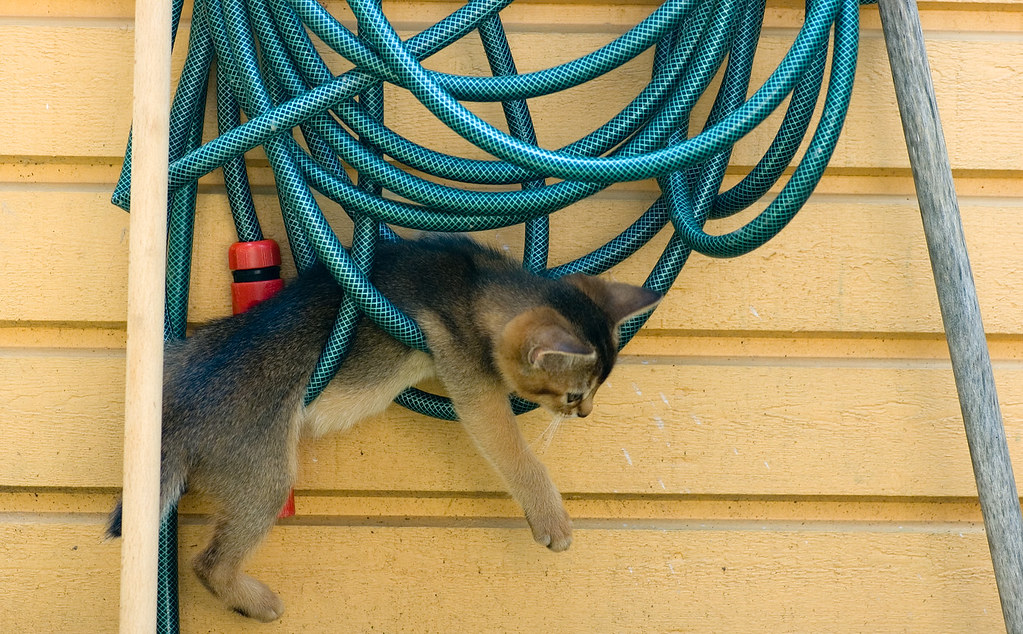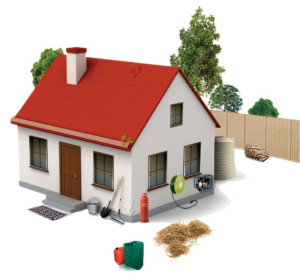
Kitty says, “Don’t get hung up on bush fire safety, make sure your hoses are in good nick and can reach every corner of your home.”
There are may simple changes that you can make to your garden and buildings that greatly increase their chances of withstanding a bush fire. Below is a checklist to help you get started, and links to other tools and information.
The most appropriate improvements to your property will vary depending on your location and the types of structures you have. We provide a free service to locals to assess your property and can provide relevant advice, just get in touch with us to find out more.
Home Evaluation Checklist
These are a range of suggested upgrades that we have combined from a number of sources to get you thinking. Not all of them will suit every home or every budget. You will most likely have a few of your own to add when you’ve done a little research.
Start by printing off or writing up your own version, time to break out your trusty clip board. Everyone knows clip boards make you look extra important.
- Install metal gutter guards.
- Install metal mesh fly screens on windows and doors.
- Consider installing shutters or removable screens to cover glass doors or windows.
- Add a water tank and diesel or petrol pump.
- Attach a sprinkler system to gutters.
- If you have a pool, large tank or dam, put a Static Water Supply (SWS) sign on your property entrance. (Contact your local brigade to register.)
- Add gravel, paved or concrete paths and skirting around your home as a barrier and keep them clear of weeds and fallen leaves.
- Choose non-combustible door mats and garden and patio furniture (Store cushions inside).
- Check that your roof and external walls and cladding are in good condition regularly. Holes and gaps should be covered or repaired so embers can’t get in and start burning.
- Repair damaged or missing tiles on the roof and patch patch cracks in external walls.
- Fit seals around doors and windows to eliminate gaps.
- Enclose the areas under the house, cover ventilation gaps with a fine metal mesh.
- Have hoses long enough to reach around your house that can be unhooked and brought inside to protect them from the elements and embers.
- Collect tools that will help you defend yourself and your home, E.G.: Protective clothing, cotton hairy mop & buckets and Ladders.
If you have LPG cylinders connected make sure they are clear and easy to access, that the safety vents point away from your home (or other structures including bushes ans combustible fences). Ensure they are well maintained.
BBQ bottles should be stored safely, positioning vents away from flammable materials. Always store them upright.
Non-combustible fences are the most effective at withstanding the intense heat generated by a bush fire. They may also work as a heat shield. (Brush wood fences give fire fighters nightmares!)
Plant trees and shrubs thoughtfully to reduce the spread of flame and select plants that are less flammable. Here’s a helpful fact sheet.
The sad truth is, some houses are so poorly prepared they are undefendable against a bush fire in some conditions. Fire fighters often have to make a difficult choice between which houses can be defended and which are simply too difficult or may be unsafe. You may have also heard the myth that there will always be a fire truck to defend your house – unfortunately it’s just not possible for our trucks to be everywhere in a large and fast moving bush fire event. The harsh reality is, fire fighters must prioritise. Taking the simple steps we’ve talked through in these articles to improve your home and garden can give the best chance against bush fires with or without someone there to defend it.
The 10/50 rule… Can I cut down trees on my property?
Most home owners will need to seek approval from council to cut down a tree. The 10/50 rule applies to some properties in bushfire prone areas, allowing the home owner to cut down trees without approval, depending on the size of the tree and it’s distance from the house. Use this tool on the RFS website to find out if your property qualifies for the 10/50 rule.
Planning for Bush Fire Protection (PBP)
For in-depth information on building new homes and home renovations, the PBP document is a must read. This is an official document that informs building codes and other legislation.
Bush Fire Household Assessment Tool
For the full guided experience check out this amazing and in-depth tool on the Rural Fire Service website. The Bushfire Household Assessment Tool is designed to help you make an informed decision when making your bush fire survival plan, such as whether you will leave early, or stay with your property and defend it.

